Guest authors carried the load for most the twelfth year of Bleeding Heartland’s wildflowers series. Although I have been getting around pretty well (despite a catastrophic ankle fracture in early 2022), the pace of Iowa political news was relentless in 2023. In part for that reason, I spent less time on trails and prairies than I would have liked. Turning that around is on my list of New Year’s resolutions.
I can’t express how grateful I am for the outstanding contributions of guest authors and photographers. In alphabetical order: Katie Byerly, Lora Conrad, Kara Grady, Beth Lynch, Bruce Morrison, Diane Porter, Leland Searles, and Kenny Slocum. Thanks also to the friends who allowed me to publish some of their images in my own wildflower posts, and to Bleeding Heartland user PrairieFan for highlighting the devastating impact of chemical trespass on many native plants.
This series will return sometime during April or May of 2024. Please reach out if you have photographs to share, especially of native plants I haven’t featured yet. The full archive of posts featuring at least 250 wildflower species is available here. I have also compiled links to several dozen posts that covered many plants found in one area, rather than focusing on a single kind of wildflower.
For those looking for wildflower pictures year round, or seeking help with plant ID, check out the Facebook groups Flora of Iowa or Iowa wildflower enthusiasts. If you’d like a book to take with you on nature outings, Lora Conrad reviewed some of the best wildflower guides last year. A book featuring plants native to our part of the country is probably more reliable than the plant ID app on your phone.
May 17: Spring mix from Johnson County
Johnson County Supervisor Lisa Green-Douglass allowed me to publish numerous photographs she had taken in April and May on various Johnson County conservation properties. Here’s shooting star (which is rare), blooming in May in Kent Park.
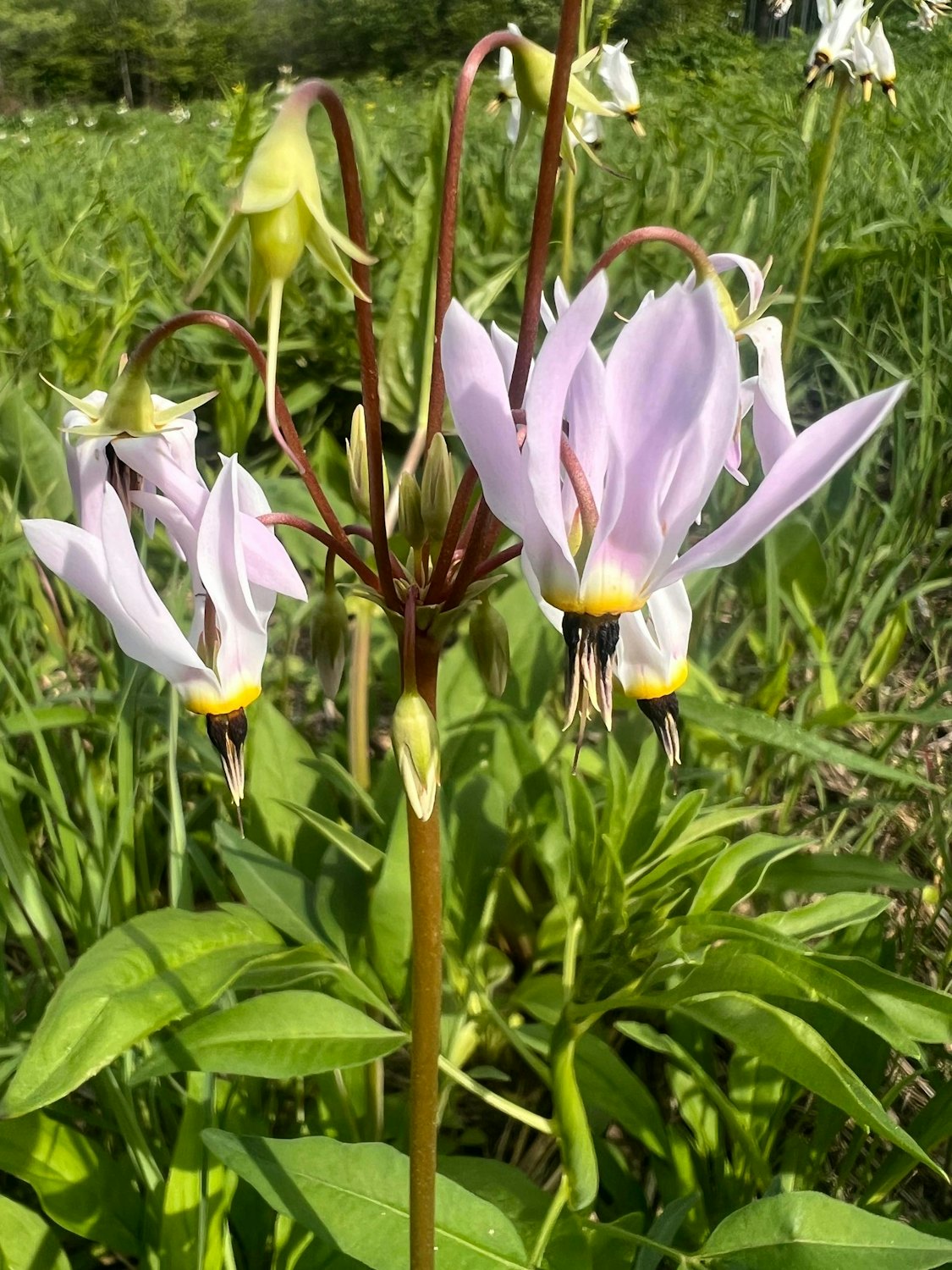
May 24: Edible Valerian
To my knowledge, I’ve never seen this plant in the wild. As usual, Katie Byerly shared lots of knowledge along with many photos of different parts of the plant.

May 31: Book review: The Revolutionary Genius of Plants
My brother gave my younger son a copy of Stefano Mancuso’s 2018 book. I borrowed it and was so fascinated I decided to write up some takeaways for Bleeding Heartland readers. The full title is The Revolutionary Genius of Plants: A New Understanding of Plant Intelligence and Behavior.
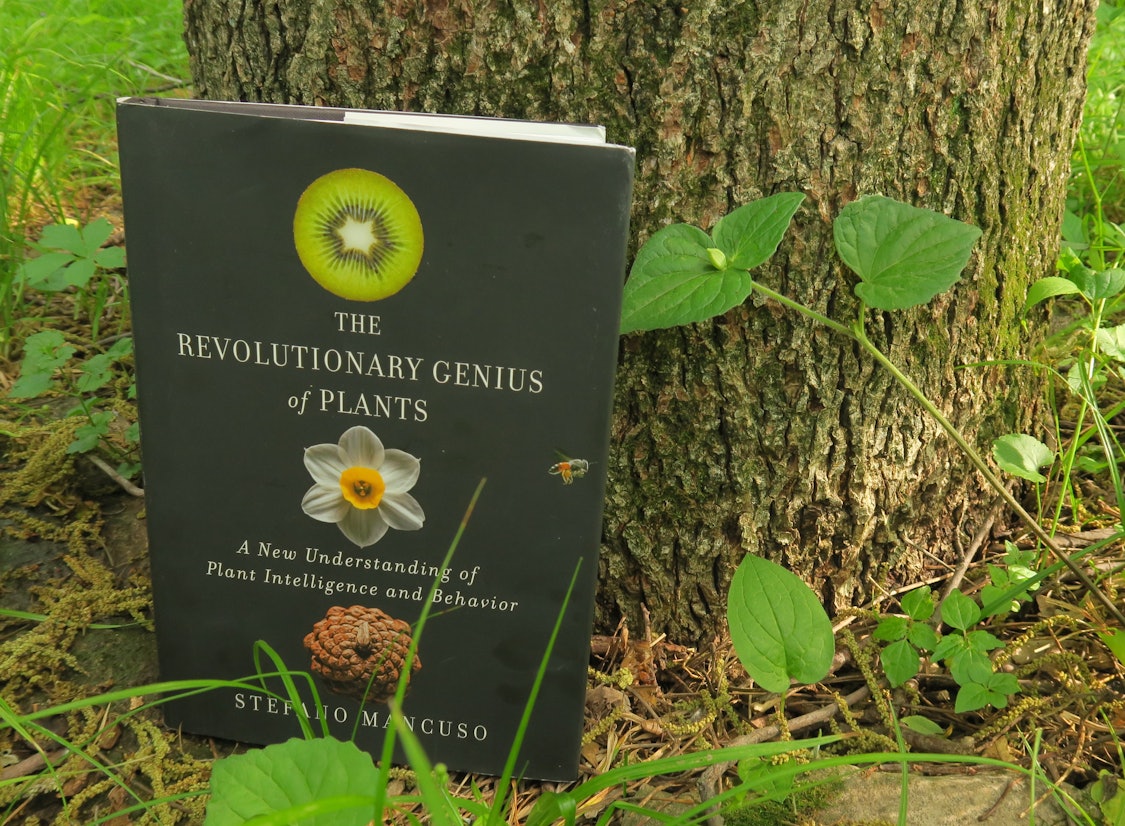
June 7: False Gromwell
Bruce Morrison is a professional artist and photographer, and it always shows whenever he contributes. False Gromwell is not what you would call a “showy” wildflower, but the pollinators love it.
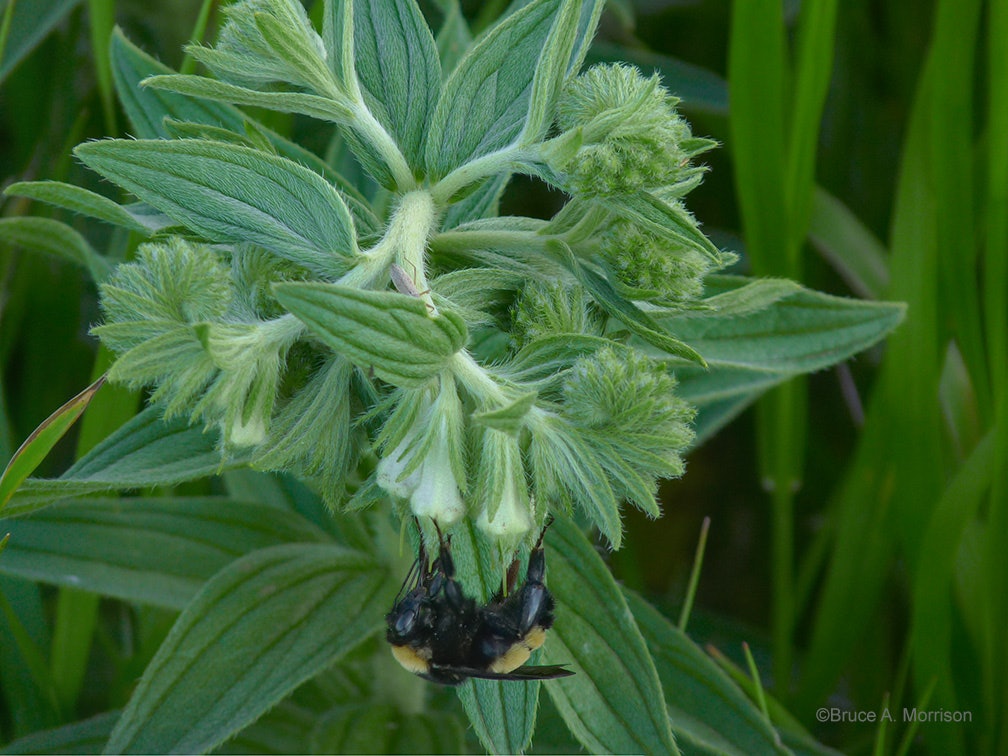
June 14: Iowa’s orchids are disappearing, leaving behind more questions
Kara Grady was one of Bleeding Heartland’s new guest authors in 2023, and I learned something from every one of her articles. “More than half of the 30 orchid species native to Iowa are considered endangered or threatened in the state,” she wrote in this piece, which explored some of the reasons. The photo at the top of this post is one of Kara’s, showing Lesser yellow lady’s slipper. This next shot is of showy orchis, which Marla Mertz featured in a Bleeding Heartland post from 2016.
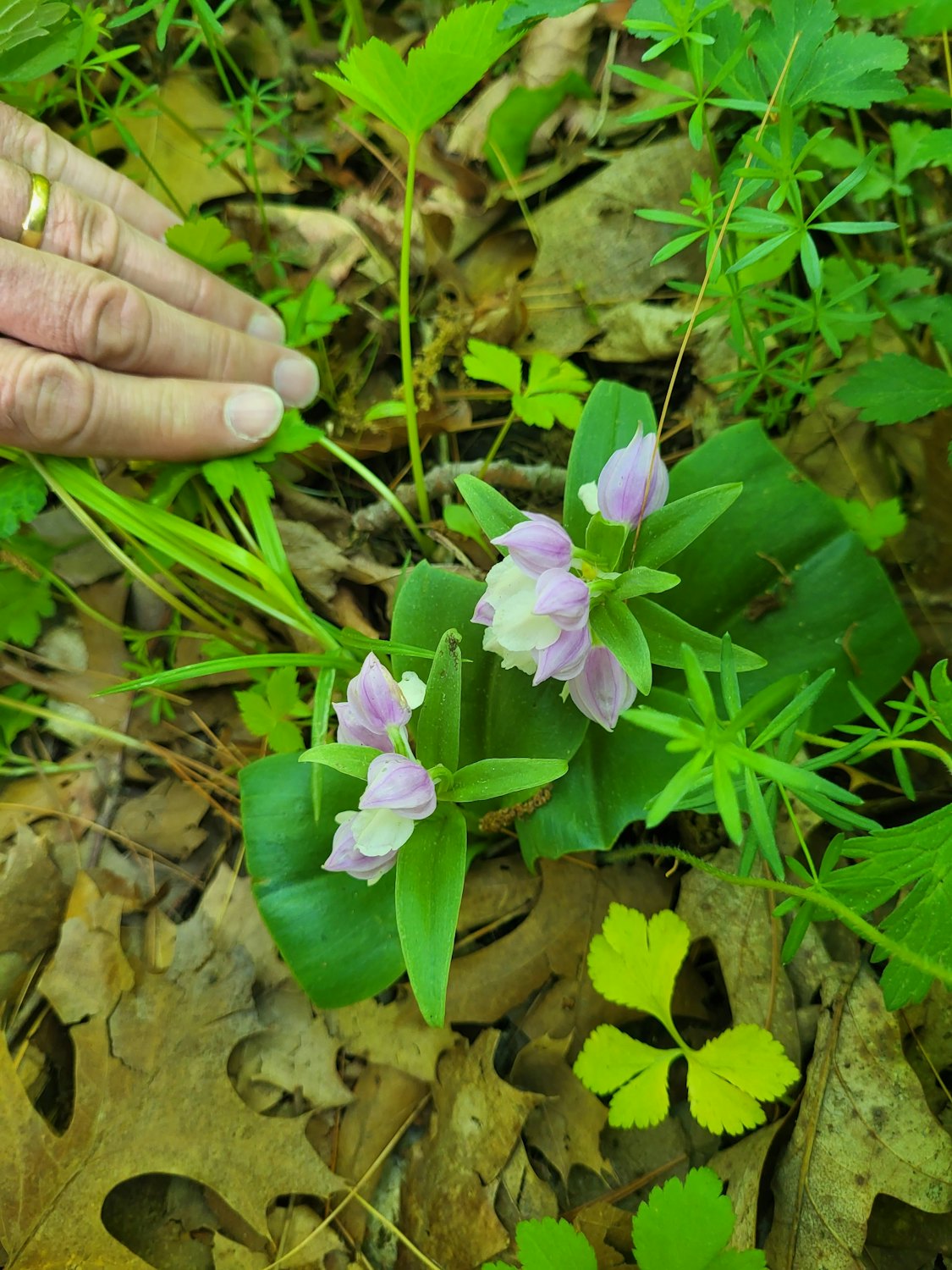
June 21: Wild lupine
Kenny Slocum often conveys big ideas while showcasing native plants. In this piece, the naturalist and natural resource manager for the Clayton County Conservation Board explains why wild lupine is so important in some northeast Iowa prairies, and how prairie seed mixes often include the “wrong” lupine for our area.
Most of Kenny’s photos depict the other plant, known as large-flowered lupine. This photo, which I included near the end of Kenny’s post, is by Janet Pulver and shows the native wild lupine blooming in Guthrie County.
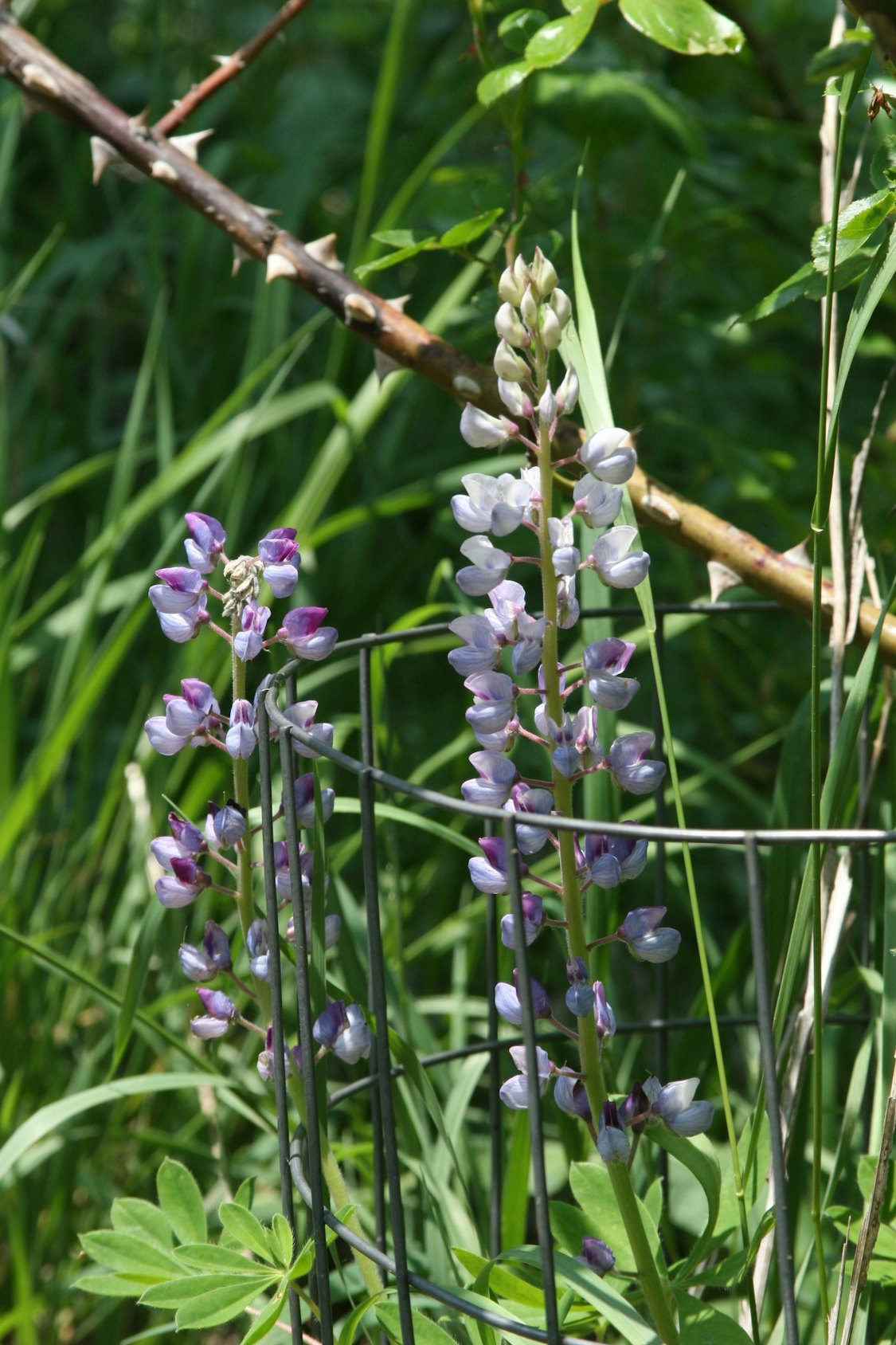
June 28: Experiencing Iowa’s beautiful northern Loess Hills on foot
Patrick Swanson has been restoring a Harrison County prairie for years and has contributed many posts featuring plants that thrive in southwest Iowa. This piece recounted “the third installment of the LoHi Trek, a multi-day hike through the Loess Hills organized by Golden Hills Resource Conservation and Development and other partners.” The hikers covered the northern part of the Loess Hills, in Plymouth and Woodbury counties.
Patrick shared photos of many plants in this piece. This shot features a flower that most Bleeding Heartland readers have probably never seen. White Beardtongue is “a Great Plains species that reaches the eastern extent of its range in far northwestern Iowa.”
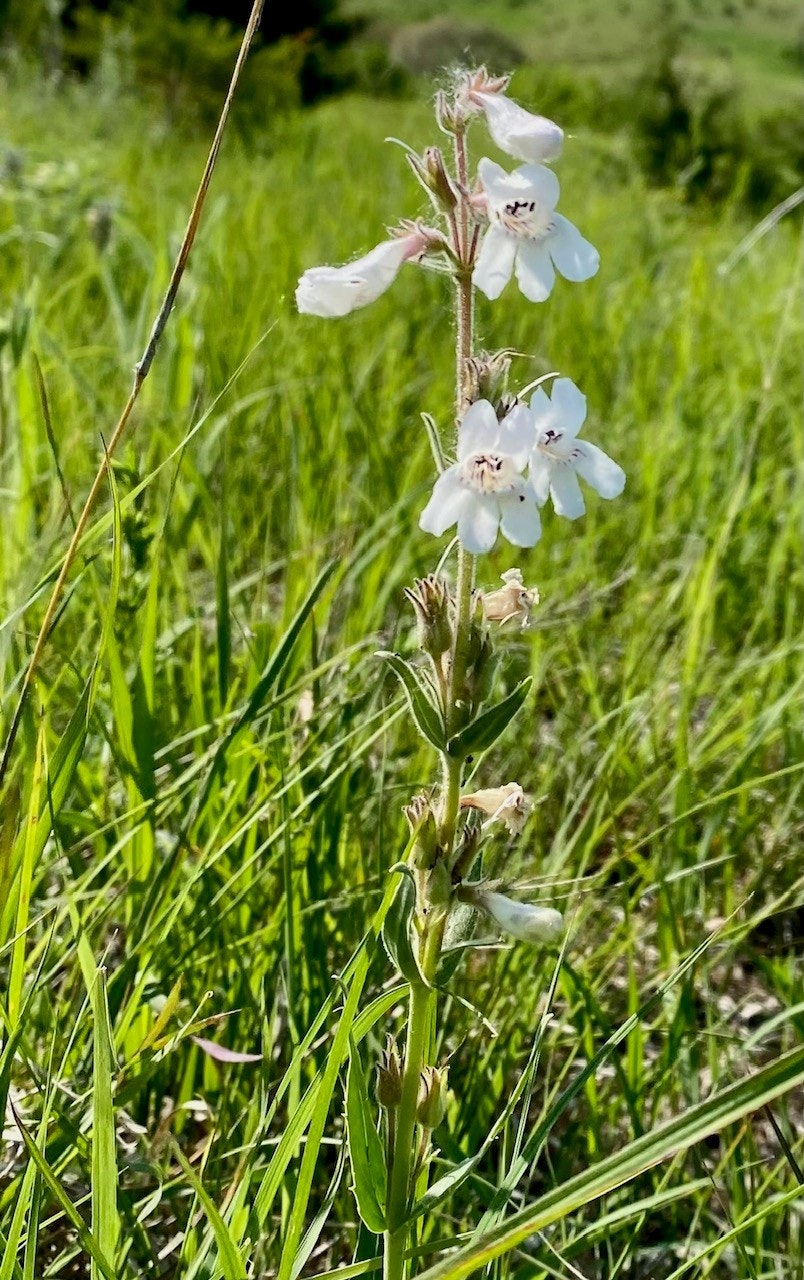
June 29: Chemical trespass, a rural Iowa reality
Technically, this piece by PrairieFan wasn’t part of the Iowa wildflower Wednesday series. I’m including it because the drift of farm chemicals can affect wildflowers as well as PrairieFan’s boxelders. When I visited Bruce Morrison’s home in September, he showed me a tree that had been severely damaged after a neighbor sprayed his farmland.
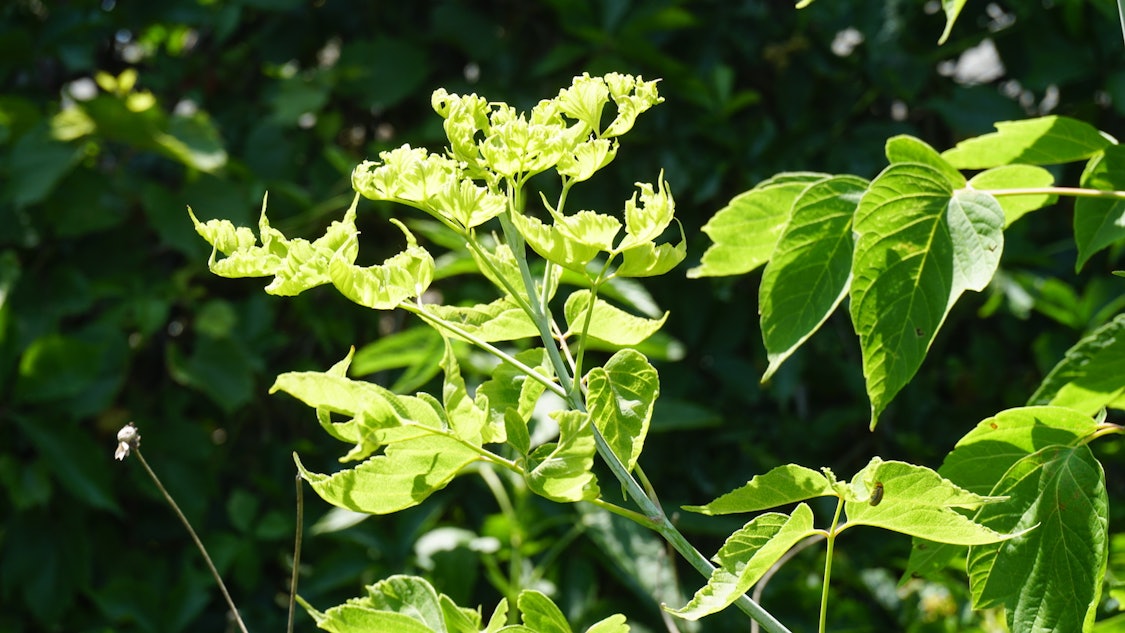
July 5: Jacob’s Ladder
This gorgeous spring bloomer has been on my wish list for many years. Lora Conrad delivered with a well-researched essay featuring many views of the plant at different stages. Here, you can see flowers at their peak, as well as “some secondary branches on the stalks that will bloom later than the main limb.”
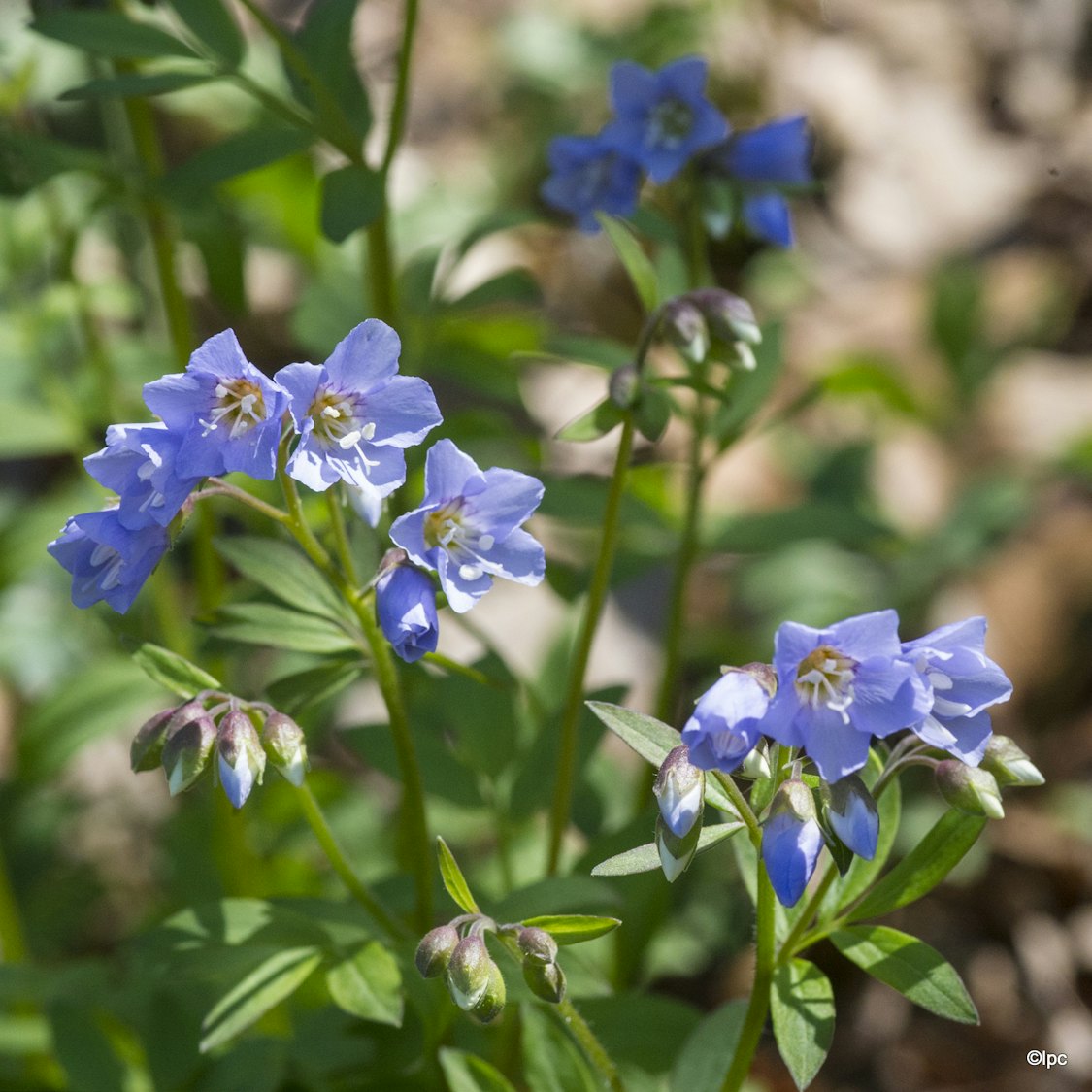
July 12: Wild Four-O’Clock
Here’s another native plant I’ve wanted to feature for a long time. I have occasionally seen wild four-o’clock near bike trails in my area, but I never had a good collection of photos. Enter Bruce Morrison, who not only compiled lovely images of the foliage and flowers, but also captured a Common Looper Moth sampling the nectar or pollen.
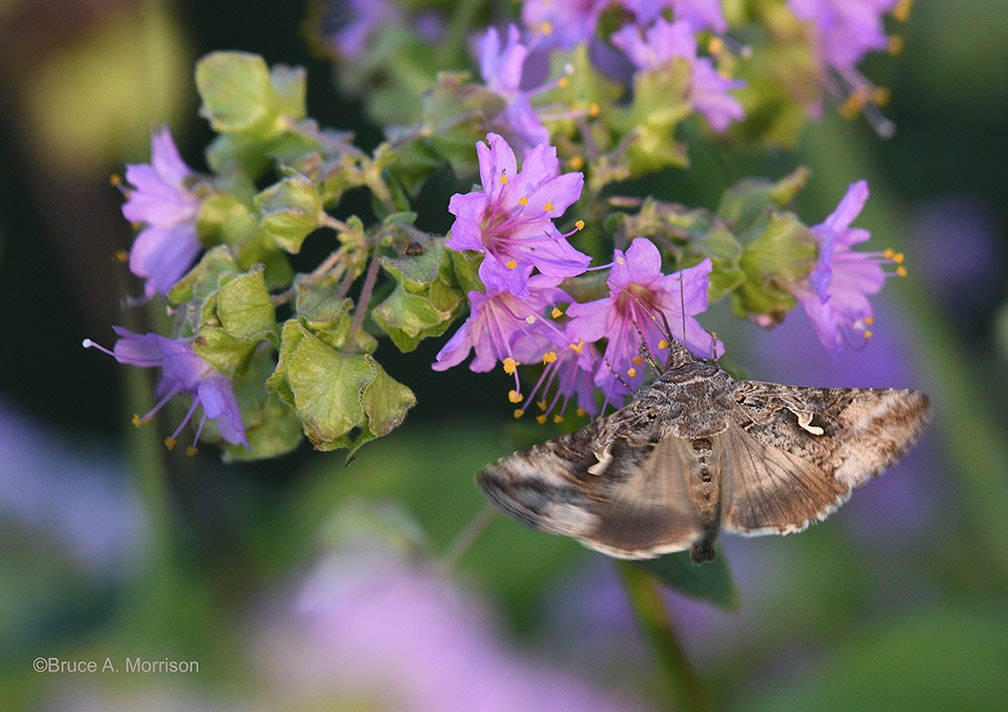
July 19: False Solomon’s seal
Jo Hain helped me check this one off my wish list. I have seen false Solomon’s seal from time to time but never close enough for me to photograph at different stages. Jo regularly visited a colony in Cerro Gordo County and gave me permission to publish many of her pictures.
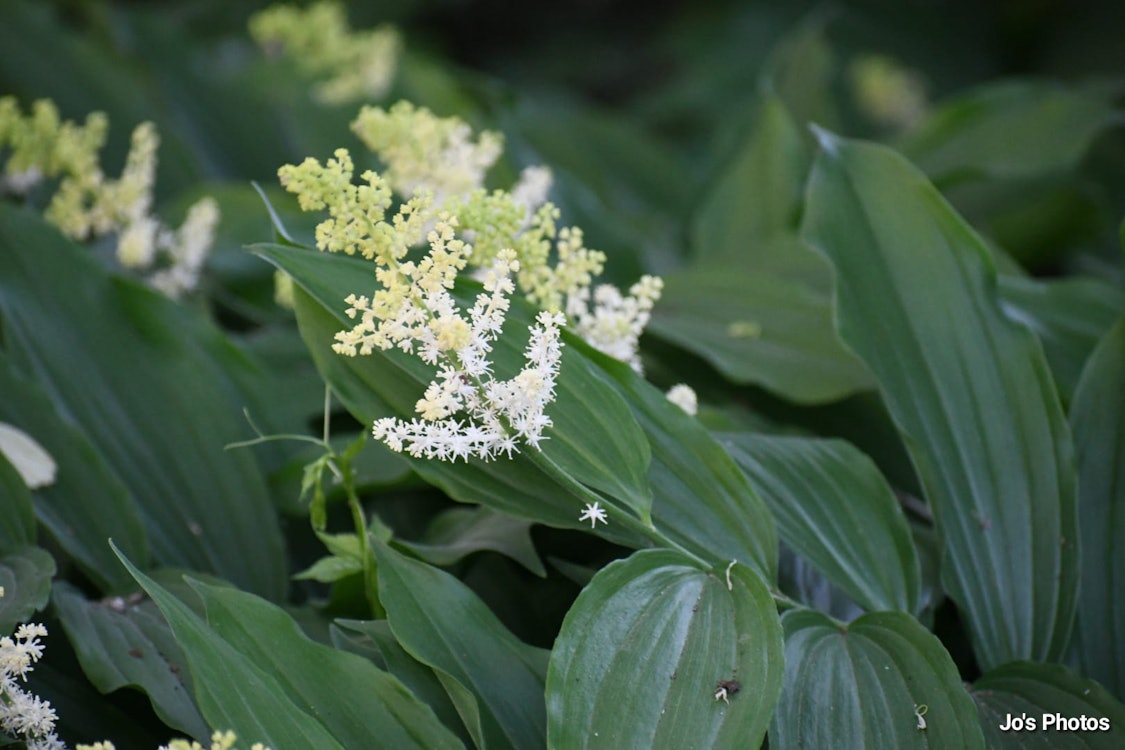
July 26: Blueflag Iris
Katie Byerly wrote in this post, “I love the dark purple veining giving directions, like a landing pad for the bumblebees that cross-pollinate the flowers.” She later explained that bumblebees “don’t spend a lot of time at one flower. They land on the sepal and crawl right in under the turned up style for the nectar, then back out butt first.” Here’s one of those bumblebee visits:

August 2: Notes from a prairie tour across Iowa
In late July, Kenny Slocum took some friends to the starting point of RAGBRAI and drove their vehicle back to the finish line near the Mississippi River. Along the way, he visited a half-dozen native or restored prairies and natural areas. Here’s one of his photos, featuring dotted blazing star in Wilkinson Prairie (Cerro Gordo County).
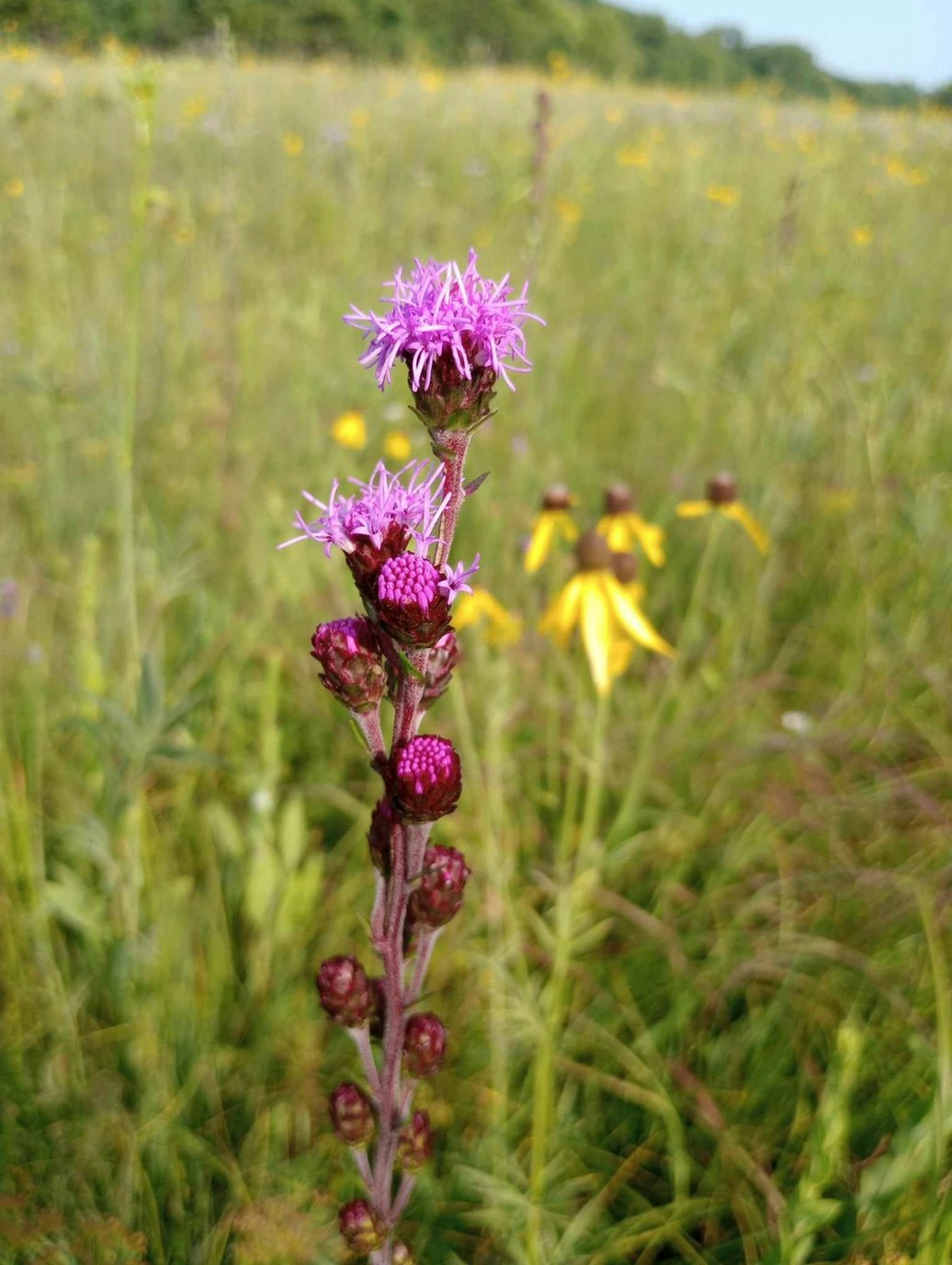
August 9: The surprise of the large-flowered beardtongue
While camping with her father at Morgan Creek Park in Linn County, Kara Grady was lucky to see large-flowered beardtongue, “a wildflower that blooms for only three weeks during early summer.”

August 16: Meet the baneberries
Luther College Associate Professor Beth Lynch wrote this informative piece “about two closely related plant species that can be confusing for the novice to identify.” Red baneberry is far more common than white baneberry. But red baneberry plants sometimes produce “snow-white berries when ripe, instead of the usual deep red.” Here’s one example:
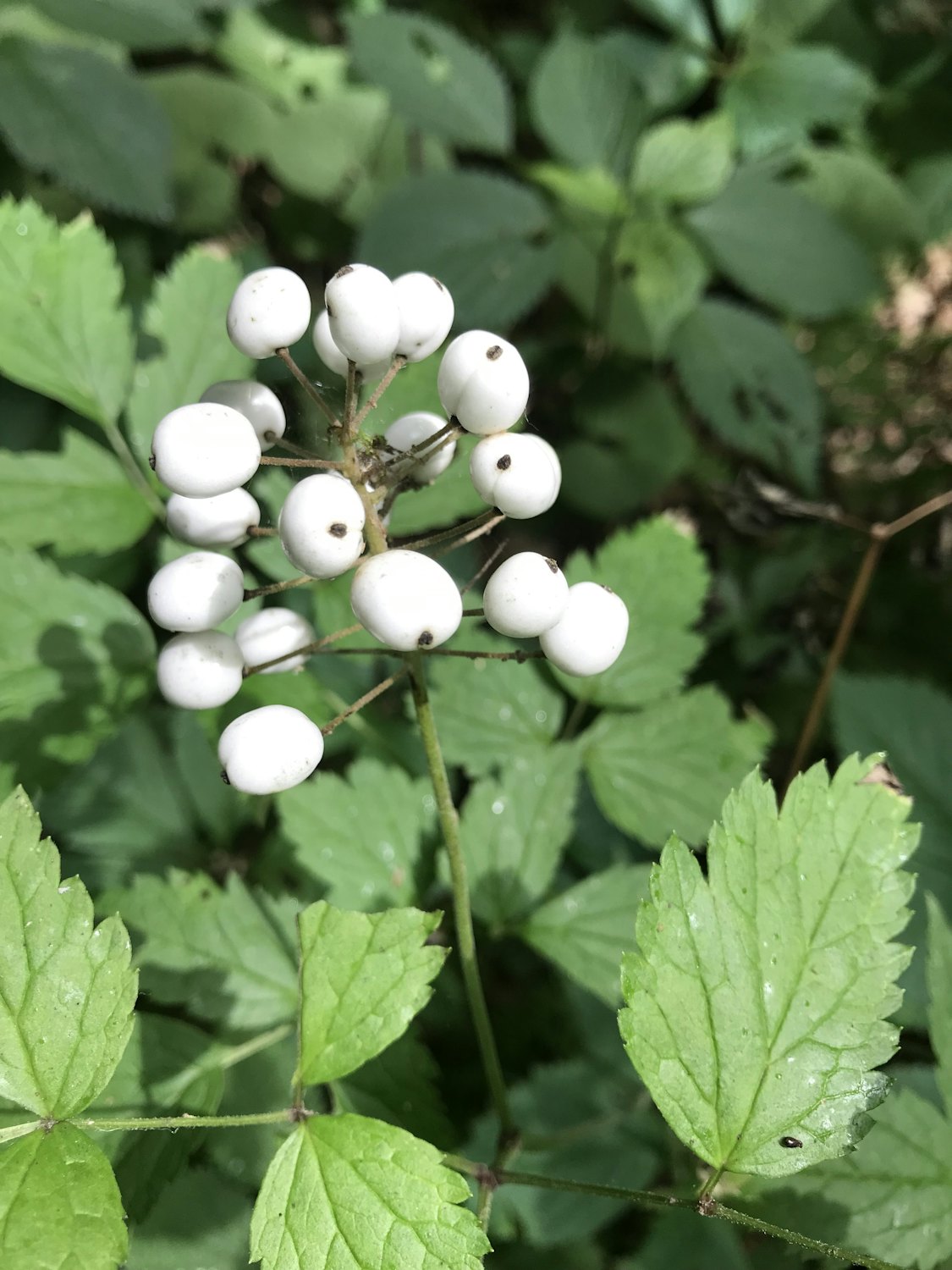
August 23: Kara Grady’s Annual Prairiestomp Across Iowa
Inspired by Kenny Slocum’s photo diary, Kara decided to share images from “my own prairie tour, featuring some of the most niche ecosystems Iowa had to offer.” Here’s prairie larkspur, which Kara photographed during Big Sand Mound Field Day south of Muscatine.

August 30: Compass plant
Diane Porter gave me permission to republish a piece she wrote for her email newsletter My Gaia, which I highly recommend to anyone who loves wildflowers or birds. You can’t miss compass plants, which are usually the tallest flowers on any prairie where they bloom. But I don’t think I had ever noticed the “spiky seed heads” before Diane shared this close-up image.
Another fun fact I learned from Diane:
A compass plant may live for 100 years.
When you make space for one in your life, you’re taking a stand to protect what we cannot bear to lose. It’s well worth a two-to-four-year wait to see the blossoms.

September 6: Illinois bundleflower
The first time I remember encountering this distinctive wildflower was in July 2022, when I visited the prairie strip on Lee Tesdell’s century farm in northern Polk County. Leland Searles, a consultant who works on ecological planning and plant inventories, among other things, volunteered to share some of his outstanding photographs.
Illinois Bundleflower, also known as Prairie Mimosa or Prickleweed, “prefers sunny, moist areas in wet prairies and wetland margins.” Here is a shot of the white flowers. Click through to view the brown seed clusters that inspired the name bundleflower.

September 13: Woodland wonders at Lake Macbride
Kara Grady saw some spectacular plants on a visit to Macbride Nature Recreation Area in Johnson County, including a tree they call “Mother Oak” and purple milkweed, shown here in a photograph by land manager Tamra Elliott.

September 20: Monarchs on my mind
I’ve seen lots of monarchs in my life, but never dozens at a time. Bruce Morrison has been photographing monarch butterflies at his acreage in southeast O’Brien County for many years, and has kept track of how many monarchs roost there on their journey south in late summer. Here’s one of the many incredible shots:
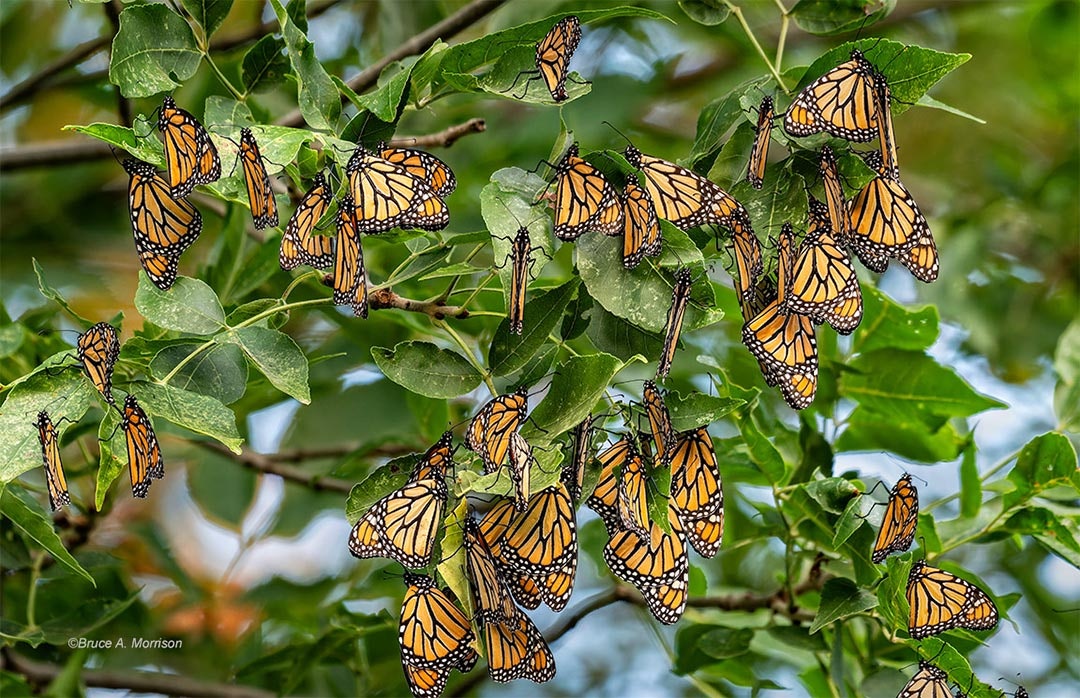
September 27: The magic of monarch waystations
Kara Grady continued the pollinator theme with this essay about gardening with native plants to attract butterflies. She visited several “small but mighty plots,” including this one in Amana, which “provided everything monarch butterflies needed to thrive—food, shelter, and nectar—in about a 10 ft by 10 ft area, packed with flowers.” Kara’s post also includes an example of a design for a pollinator planting on a garden plot.
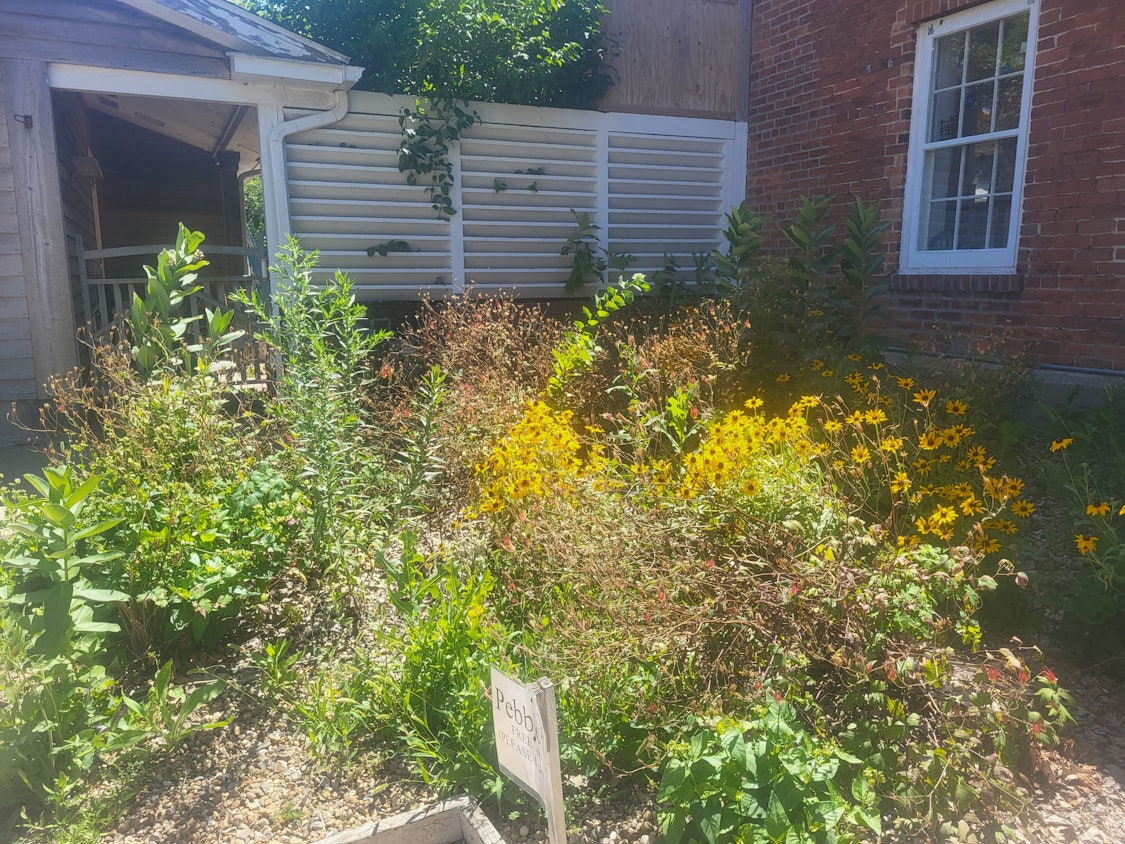
October 4: October stragglers
I went out to the prairie planting behind the Iowa Department of Natural Resources building on Hickman Road in Windsor Heights to see what flowers were still blooming on October 4. As expected, quite a few asters and goldenrods still had flowers, but I found several other plants that still had a few flowers, even though most of their species had gone to seed weeks earlier. Here’s some partridge pea:
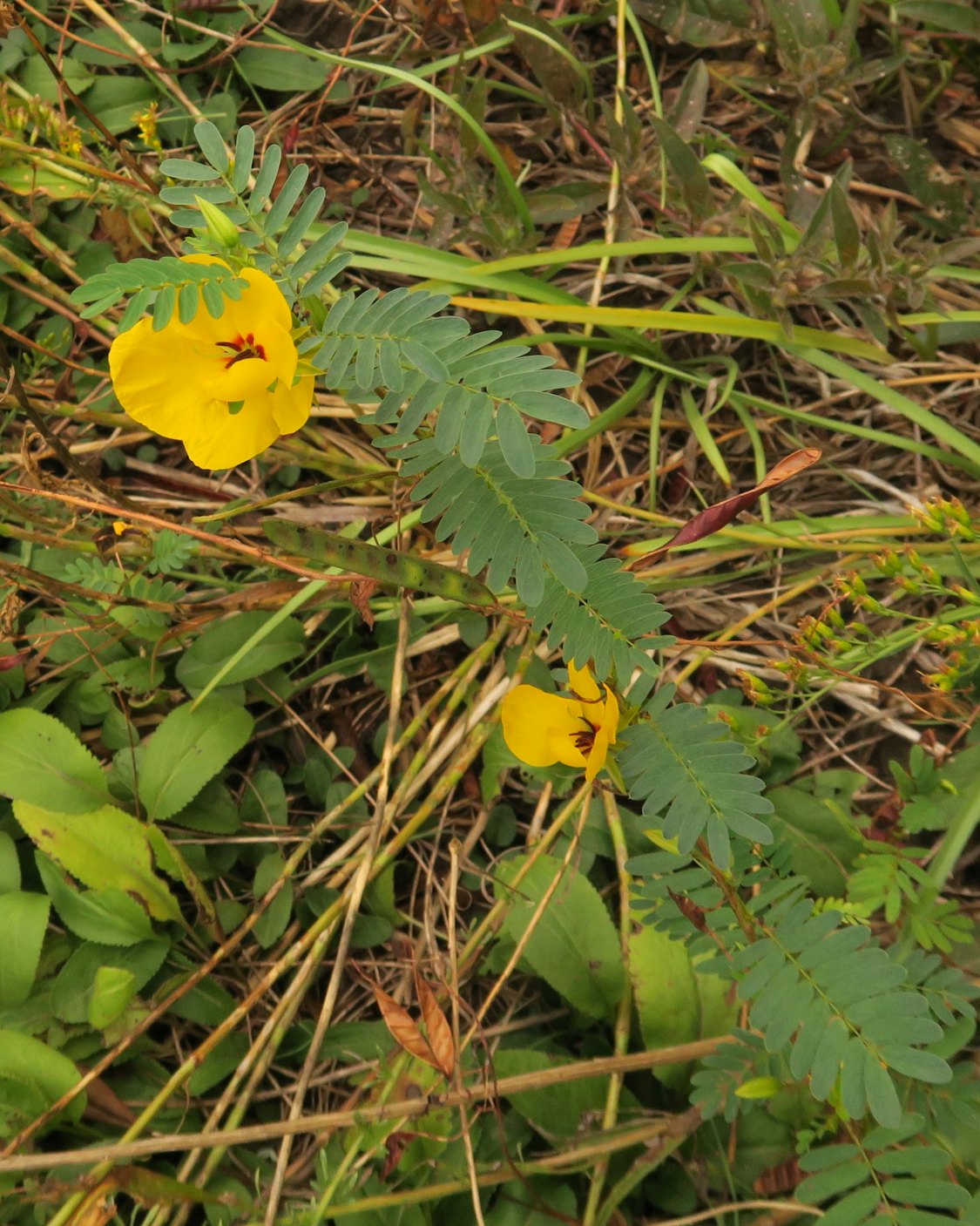
October 18: Northern Monkshood
Katie Byerly’s three-year quest to find this rare species paid off in 2023. How rare is it? “According to the U.S. Fish and Wildlife Service website, Northern Monkshood can only be ‘found in three disjunct populations: one bordering southwest Wisconsin and northeast Iowa, a second in northeast Ohio, and a third residing in the Catskill Mountains of New York.'”
Enjoy Katie’s post, because in all likelihood it will be the closest you ever get to seeing this native plant.

October 25: Full archive of Iowa wildflower Wednesday nature walks
For this piece, I compiled links to all of the Bleeding Heartland posts that survey a range of plants in a given area, arranged by season. This photo is from Katie Byerly’s July 2022 post featuring plants at the Rock Creek Wildlife Area in Mitchell County. Shown here: common milkweed and black-eyed Susans.
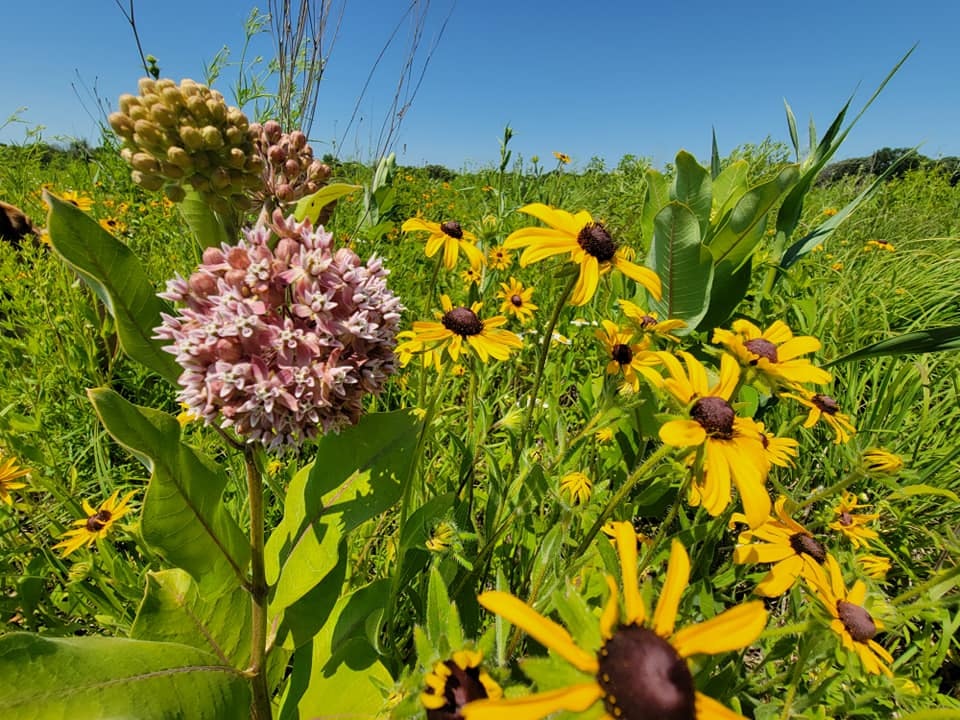
November 15: Bidens
“Whether you call them Bur Marigold or Beggarticks or one of a dozen different common names, they are all Bidens varieties,” wrote Lora Conrad in this post about plants with bright yellow flowers. I always learn so much from her essays. And I especially loved the photos that included pollinators, such as this monarch butterfly.
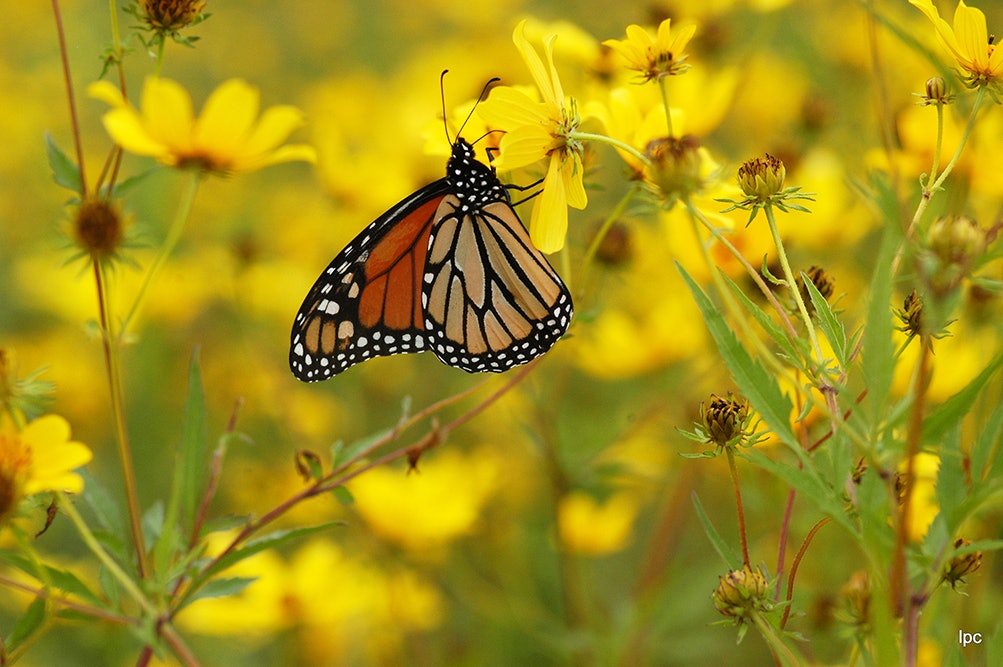

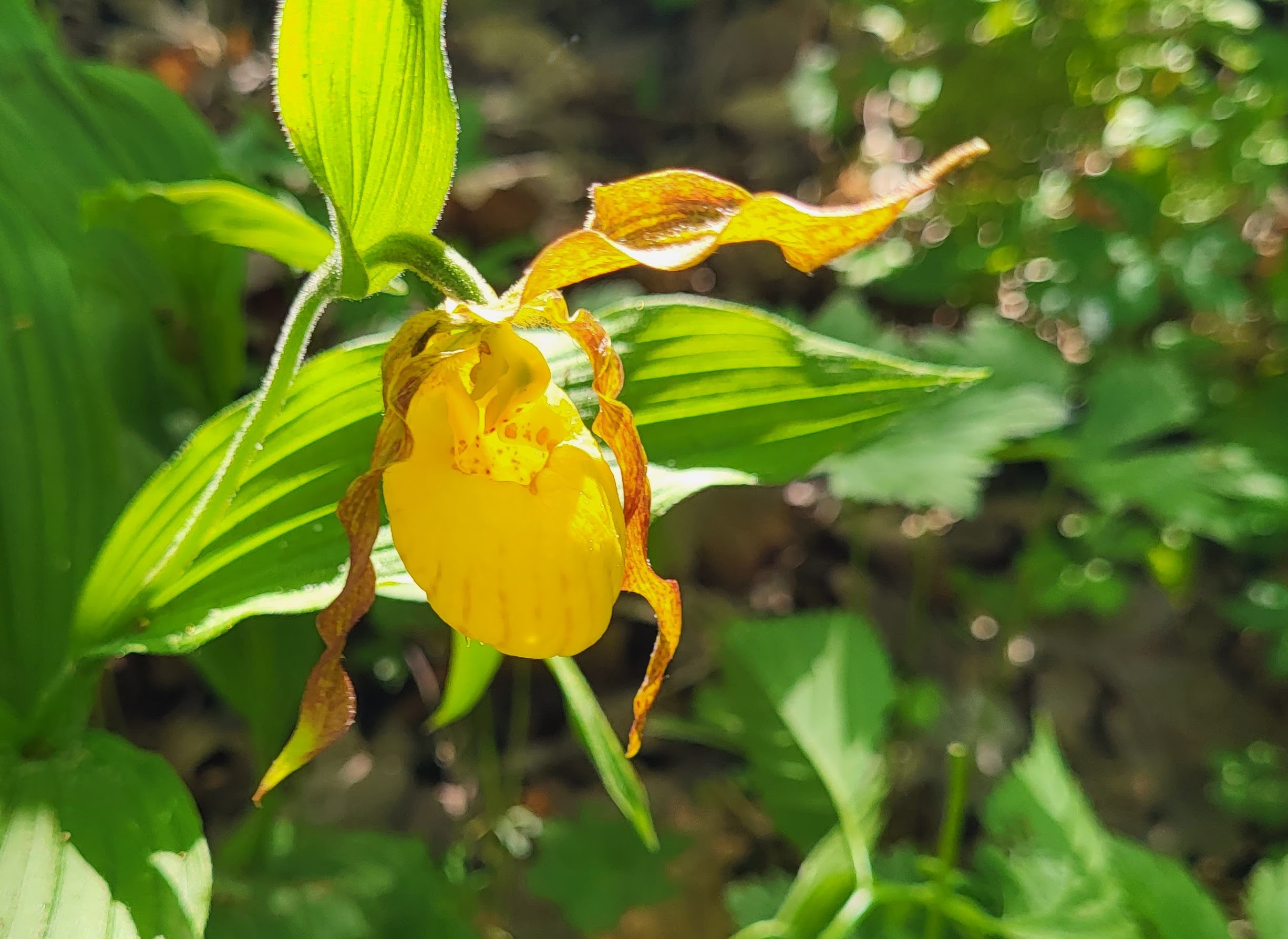
1 Comment
I am so grateful for this feature
I’ve been actively interested in Iowa wildflowers for several decades, but I still learn new things from Wildflower Wednesdays. And the photos are so interesting and so beautiful that I can feel my brain unclenching from political stress when I look at them. I especially appreciate the photos when I haven’t recently spent a lot of time outside myself.
Thank you to all the people who contribute to WW. And of course special thanks to Laura Belin! May your walking (and ankle) be renewed, and may your wildflower viewing be joyous in 2024.
PrairieFan Fri 29 Dec 4:54 PM